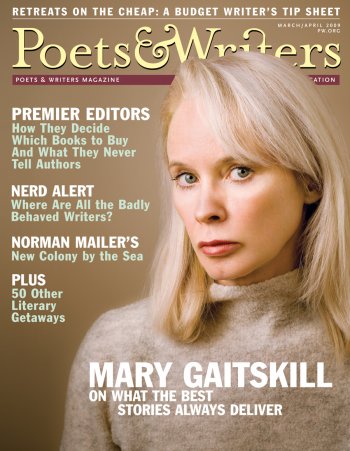
Mary Gaitskill on what the best stories always deliver, plus our annual special section on literary getaways and, as part of our continuing Agents and Editors series, four young editors reveal what they never tell authors.
Jump to navigation Skip to content

Mary Gaitskill on what the best stories always deliver, plus our annual special section on literary getaways and, as part of our continuing Agents and Editors series, four young editors reveal what they never tell authors.
Even at their darkest, Mary Gaitskill's stories illuminate the core mystery of what it means to be alive.
In her writing, Cuban American novelist Achy Obejas returns to her beloved Havana, completing a trip that began on a small wooden boat over forty-five years ago.
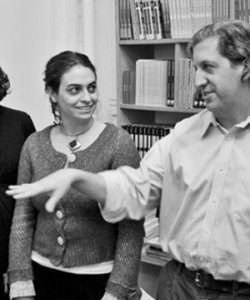
Four young editors, from big houses and small, take some time off to discuss what makes a good manuscript, what they’ve come to expect from their authors, and how much of their work needs to be done at night and on weekends.
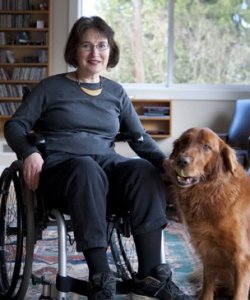
Award-winning poet Lucia Perillo would just as soon surrender the idea of a readership altogether and focus on what truly matters—great poetry.
The new colony based at Norman Mailer's home in Provincetown will open its doors to prose writers in May.
Poets and writers work alongside artists, musicians, and scholars at the Anderson Center in Red Wing, Minnesota.
Yoga and writing retreats can benefit the body and the creative mind.
A literary festival held every October on the Indonesian island of Bali draws international writers such as J. M. Coetzee, Wole Soyinka, and Mohammed Hanif, as well as readers from around the world.
The annual literary festival in downtown Montreal features workshops, readings by international authors, and multilingual panel discussions on topics such as translation and politics.
Tips for creating a writing retreat on a budget.
Three new biographies tackle the private lives and literary legends of Donald Barthelme, John Cheever, and Flannery O'Connor.
By presenting seventy-three poets, all of whom the editors believe constitute what Charles Bernstein famously called "official verse culture" as well as its unofficial, avant-garde counterpart, the new anthology American Hybrid strives to showcase the diversity of contemporary American poetry while also revealing the unusual affinities within it.
With so many good books being published every month, some literary titles worth exploring can get lost in the stacks. Page One offers the first lines of a dozen recently released books, including Noelle Kocot's Sunny Wednesday and Jane Vandenbergh's A Pocket History of Sex in the Twentieth Century as the starting point for a closer look at these new and noteworthy titles.
Small Press Points highlights the happenings of the small press players. This issue features Canarium Books, Tupelo Press, Chelsea Green, and Persea Books.
Literary MagNet chronicles the start-ups and closures, successes and failures, anniversaries and accolades, changes of editorship and special issues—in short, the news and trends—of literary magazines in America. This issue's MagNet features the Normal School, McSweeney's Quarterly Concern, and Narrative.
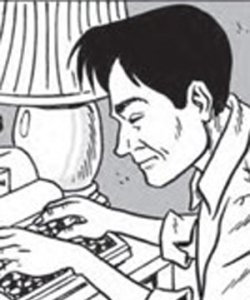
Trying to capitalize on the popularity of graphic novels, Hill and Wang, an imprint of Farrar, Straus and Giroux, has begun publishing graphic nonfiction titles. Their latest release, The Beats: A Graphic History, covers all the major writers of the generation.
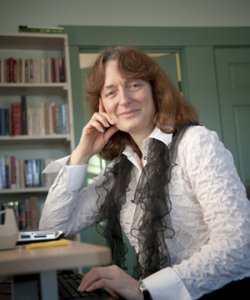
April Ossmann, who recently stepped down as executive director of Alice James Books, the Farmington, Maine–based nonprofit cooperative poetry press founded in 1973, spoke about her time at Alice James from her home in Post Mills, a snowy hamlet in eastern Vermont.
Poets such as Aaron Fagan, Thylias Moss, and Anne Carson are taking advantage of advances in video recording, editing software, and distribution channels to create an entirely new way to find readers.
Journalist and fiction writer Wells Tower makes his international debut with a collection of short stories.
A concise guide to submitting poetry, fiction, and nonfiction to New Ohio Review.
Today's successful writers seem to be more industrious than indulgent.
My confusion came from a curious warning. Awash in a sea of writers and would-be writers in a drab-walled meeting room at the Association of Writers & Writing Programs Conference a few years ago in Vancouver, B.C., I was listening to author Dinty W. Moore extol the virtues of creative nonfiction writing when suddenly he straightened his stout body and leaned across the podium. "Look out," he cautioned, his tone dire, "the journalists are coming!"